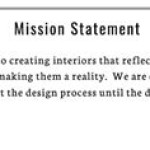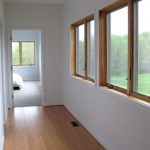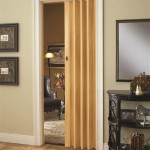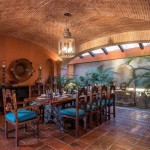Interior Design Styles: A Guide to Finding Your Aesthetic
Interior design is much more than just choosing furniture and colors. It's about creating a space that reflects your personality, lifestyle, and preferences. This process involves understanding the various design styles that exist and how they can be used to create a cohesive and aesthetically pleasing environment. Interior design styles are broad categories that encompass a range of elements like color palettes, furniture shapes, materials, and textures. From the minimalist elegance of Scandinavian design to the bold and eclectic charm of Bohemian style, each design style has its unique character. This article will explore some of the most popular interior design styles, providing a guide to understanding their defining features and how they can be utilized in your own home.
1. Scandinavian Design: Minimalism Meets Functionality
Scandinavian design, often referred to as Nordic design, is characterized by its simplicity, functionality, and use of natural materials. This style focuses on creating a clean, airy, and welcoming atmosphere. Key features of Scandinavian design include:
- Minimalism: Emphasis on clean lines, uncluttered spaces, and a focus on essential objects.
- Light and airy color palette: Predominantly white, gray, and natural wood tones, often accented with pops of color in blues, greens, or yellows.
- Natural materials: Wood, wool, linen, and cotton are favored for their texture, warmth, and sustainability.
- Functionality: Furniture pieces serve a practical purpose and are well-designed for comfort and use.
Scandinavian design is a versatile style that can be adapted to different spaces and personal preferences. It is often associated with a sense of calm and tranquility, making it ideal for bedrooms, living rooms, and kitchens.
2. Modern Design: Clean Lines and Geometric Shapes
Modern design, which emerged in the early 20th century, prioritizes functionality, clean lines, and geometric shapes. It is characterized by a minimalist aesthetic that emphasizes simplicity and a sense of order. Key features of modern design include:
- Simple forms: Geometric shapes, straight lines, and lack of ornamentation.
- Neutral color palette: Predominantly black, white, gray, and beige, often with pops of color in accent pieces.
- High-quality materials: Steel, glass, leather, and concrete are frequently used for their durability and modern aesthetic.
- Open floor plans: Modern designs prioritize open spaces and seamless transitions between rooms.
Modern design is known for its sleek and sophisticated look, often creating a sense of spaciousness and modernity. It is a popular style for contemporary homes, apartments, and commercial spaces.
3. Industrial Design: Raw and Exposed
Industrial design draws inspiration from the aesthetics of factories, warehouses, and industrial spaces. It embraces raw materials, exposed elements, and a sense of ruggedness. Key features of industrial design include:
- Exposed brick walls: A defining element that adds character and texture to the space.
- Metal accents: Steel, iron, and copper are often used for structural elements, furniture, and lighting.
- Reclaimed wood: Adds warmth and a rustic feel to the space.
- Industrial lighting: Pendant lights, track lights, and exposed bulbs create a dramatic and functional lighting scheme.
Industrial design is ideal for creating a bold and masculine atmosphere. It is often used in lofts, studios, and urban homes that embrace a raw and edgy aesthetic.
4. Contemporary Design: Modern with a Twist
Contemporary design, often confused with modern design, is a more fluid and evolving style that embraces current trends and innovations. While it shares some similarities with modern design, it is less rigid and more open to incorporating new materials, textures, and colors. Key features of contemporary design include:
- Modern influences: Clean lines, geometric shapes, and open floor plans are typically present.
- Versatile color palette: Contemporary design often embraces a broader range of colors, with bold and saturated hues being equally common as neutral tones.
- Modern materials: High-quality materials like plastics, acrylics, and innovative textiles are incorporated.
- Statement pieces: Unique and expressive furniture pieces are often used to add personality and visual interest.
Contemporary design is known for its modern yet adaptable aesthetic, allowing for a wide range of personal expression and customization. It is suitable for a variety of spaces, from homes to offices to restaurants.
5. Farmhouse Design: Rustic Charm and Warmth
Farmhouse design is inspired by the simplicity and charm of rural living. It embraces natural materials, warm colors, and a sense of comfort and coziness. Key features of farmhouse design include:
- Rustic elements: Reclaimed wood, weathered stone, and vintage accents create a warm and inviting atmosphere.
- Neutral color palette: White, cream, beige, and gray are used extensively, often with pops of color in blues, greens, or reds.
- Natural textiles: Linen, cotton, and wool are used for furniture upholstery, curtains, and bedding.
- Vintage and antique furniture: Secondhand pieces add character and a touch of history to the space.
Farmhouse design is known for its inviting and cozy aesthetic, creating a sense of warmth and comfort. It is a popular style for kitchens, living rooms, and bedrooms in homes that embrace a rustic and traditional feel.

21 Most Popular Types Of Interior Design Styles In 2024 Foyr

40 Interior Design Styles Defined

Types Of Interior Design Styles Modern Minimalist Eps

Design Styles 101 The Guide To Every Interior Decorating Home

Design Styles A Look At Modern Vs Contemporary Interior

Part 2 Interior Design Styles Ellecor

Contemporary Interior Design Style All You Need To Know Beautiful Homes

Modern Interior Design 6 Key Types For Roomsets

Interior Design Styles 101 The Ultimate Guide To Decorating In

How To Transition Between Interior Design Styles On A Budget








